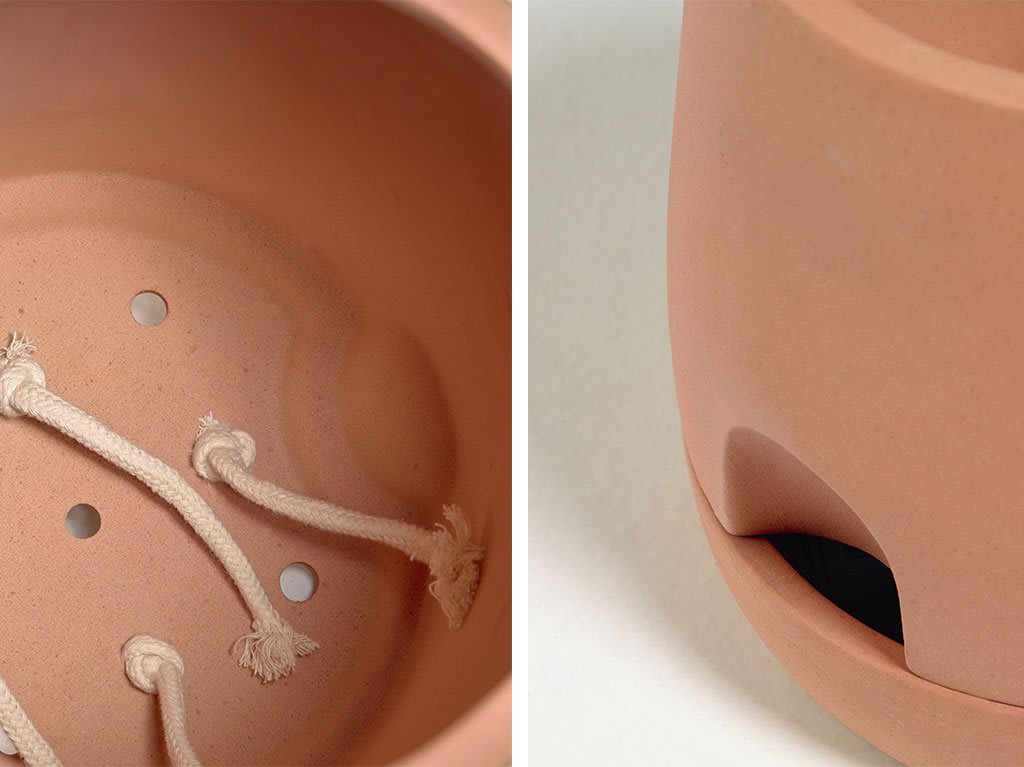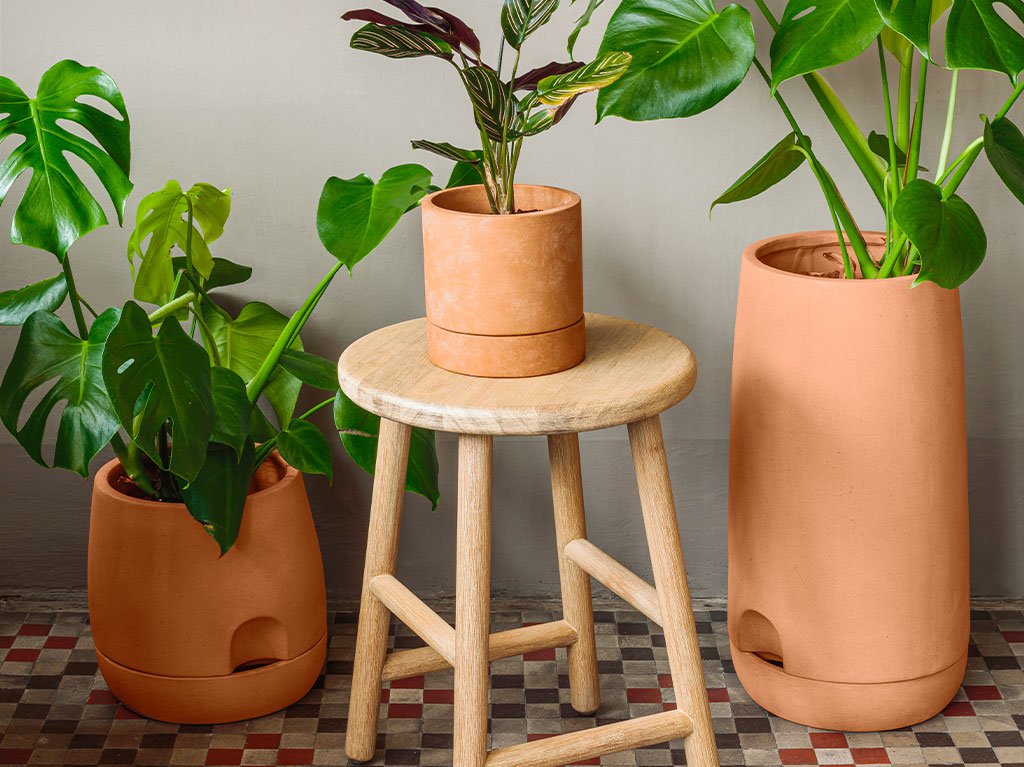
Designer-Büros
It happens to us all. We love to fill our home with greenery and then we run out of time to keep the pots watered. With self-watering plant pots, you can go on holiday without asking your next-door neighbour to look after them. Who needs a gardener? Not you!
These pots have a container with a water reservoir system, with a tank connected to a tube that absorbs what the plant needs. This way, you can go about your daily life and make the most of your quality time with your plants. Enjoy them worry-free.
The self-watering system in these plant pots is very simple. All you need to do is fill the tube with soil, leaving a little space for the roots. After potting the plant, you can fill the water tank without it overflowing. And that’s it! Now the plant has enough water for several weeks, or even a month.

You’ll see how the pot comes with an absorbent wick to keep the plant continuously hydrated. It also has a marker so that you can check the level at any time. Keep an eye on it to ensure the plant isn’t either saturated or too dry. Fill the tank whenever necessary and, above all, be observant. The moisture level of the earth and the colour of the leaves are the best indicators of what your plant needs.
As well as giving your plants the best care, this system is the most eco-friendly as it replaces watering cans and hoses, which tend to waste a lot of water. As you can see, your plant pots can be a good friend for the planet and, as a side effect, to your wallet.

Before choosing your self-watering plant pot, you should bear three points in mind, depending on the type of plant you’re going to put in it:
eco_part.descirption
eco_part.section.what_is.title
eco_part.section.what_is.description
eco_part.section.for_why.title
eco_part.section.for_why.description
eco_part.section.how_works.title
eco_part.section.how_works.description1
eco_part.section.how_works.description2
eco_part.section.who_is.title
eco_part.section.who_is.description1
eco_part.section.who_is.description2
Manche Produkte sind nicht mehr verfügbar
Wenn Sie fortfahren möchten, aktualisieren Sie bitte Ihren Warenkorb